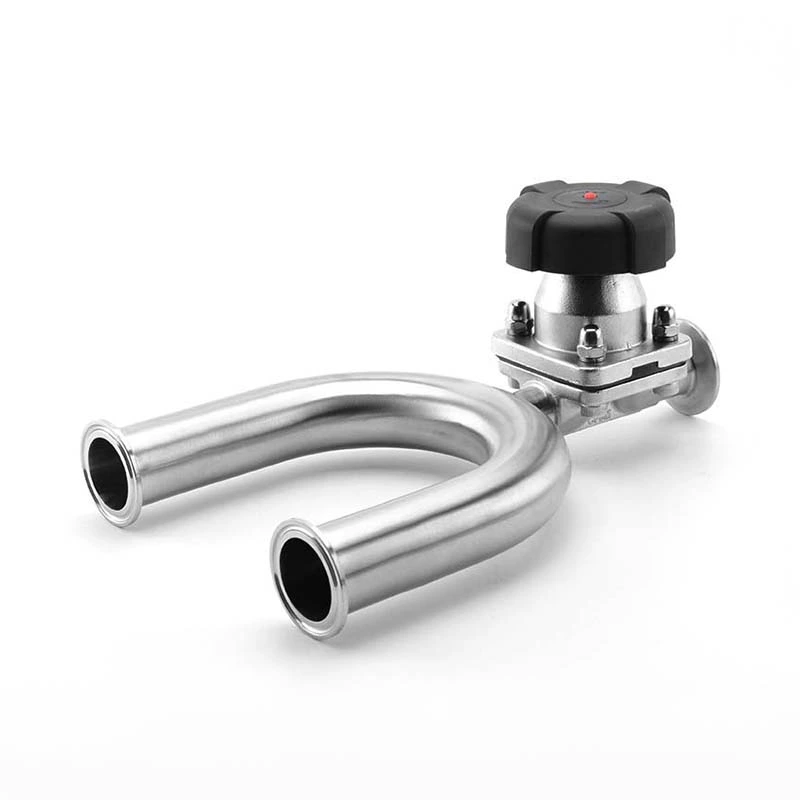Popularization Of Knowledge Related To Sanitary Pneumatic Diaphragm Valves
The Sanitary Diaphragm Valve is a sterile diaphragm valve that can be operated remotely via a pneumatic head or manually via a handle. Ideal for pipe fluid control and on/off tasks. In recent years, the quality and purity of food and medicine have been significantly improved. The pneumatic diaphragm valve with strict system and loose environment plays an important role in it. The birth of pneumatic diaphragm valves makes today's processing purer than it was 40 years ago. This valve is widely used in sanitary brewing, dairy, beverage and other food industries as well as in the pharmaceutical field under aseptic conditions. Sanitary diaphragm valves are also used in ultra-pure media in the microelectronics industry, such as high-purity chemicals. Different types of valves can be used for: ultrapure water (water for injection), ultrapure chemicals, biopharmaceuticals, finished and semi-finished products in the food processing and chemical industries. The high-tech design makes the valve hygienic and durable. Pneumatic diaphragm valves have good controllability.
It is characterized by:
•Fully airtight closing function design;
•Suitable for high flow, highly corrosive or high viscosity fluids;
•The product contact surface is smooth and safe;
•Easy to disassemble, easy to maintain, easy to clean, CIP;
•The unique diaphragm structure pneumatic head effectively extends the service life of the diaphragm.
Application areas
Xinlai BioClean aseptic diaphragm valve can meet all requirements in aseptic and ultra-hygienic processing fields. It is widely used in medicine, biopharmaceutical industry, ultrapure industry, microelectronics industry and fine chemical industry. Comply with various standard designs and meet various configuration needs. Each valve is serially marked to ensure complete material traceability. The valve body surface is highly clean and smooth, with unique flow channel design and self-draining installation angle, making it easy to disassemble, maintain and clean.
Valve structure[edit]
1. The unique sealing structure of the sterile diaphragm valve eliminates sanitary dead corners, facilitates automatic emptying of media and is more conducive to the CIP/SIP process.
2. According to its structural characteristics, the sterile diaphragm valve is recommended to be installed at an angle of 15 to 30 degrees (depending on different specifications), which is conducive to safe drainage after cleaning of the valve and will not easily cause liquid to remain inside the valve.
3. The valve body is precision machined by CNC to ensure that the sealing surface of the valve cavity matches the angle of the diaphragm, reducing the friction of the diaphragm and extending the service life of the diaphragm. The valve cavity surface can be polished mechanically or electrolytically according to customer requirements, and the polishing degree can reach 0.25um.
4. The diaphragm made of soft elastic material will not react sensitively to the working medium contaminated by fiber clusters, solid particles, catalysts, etc. Generally speaking, it will not affect the operation and sealing of the valve. Depending on the working or sterilizing temperature, as well as the chemical properties of the working medium, different materials can be selected.
5. Since different types of valves and materials will be used under different working conditions, before selecting the valve body and diaphragm, the application of a product must be analyzed, especially for chemical and pharmaceutical applications and chemical reactions caused by high temperatures. The suitability of materials is tested through valid chemical data or expert certification. This ensures product safety and long-term effectiveness.
6. The typical diaphragm fixation method is screw fixation. In contrast to open-hole fixing, this fixing method distributes the stress area over the entire surface of the bolt, which is to prevent the mechanical connection of the diaphragm from being damaged under vacuum conditions.
The above is the complete introduction to the popularization of relevant knowledge about sanitary pneumatic diaphragm valves. After reading this, do you know more about this product? I also hope it will be helpful for everyone to use this product in the future.
